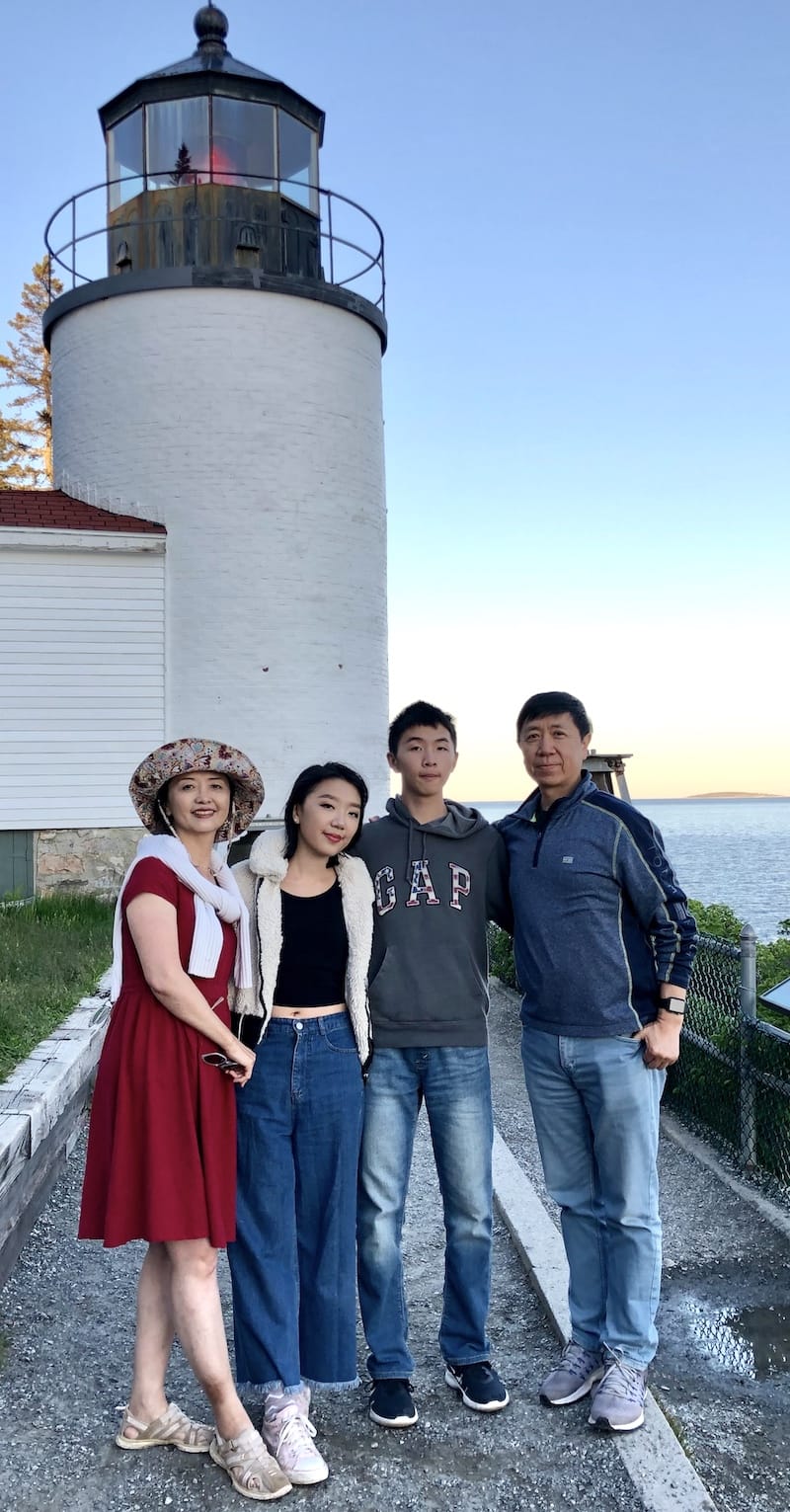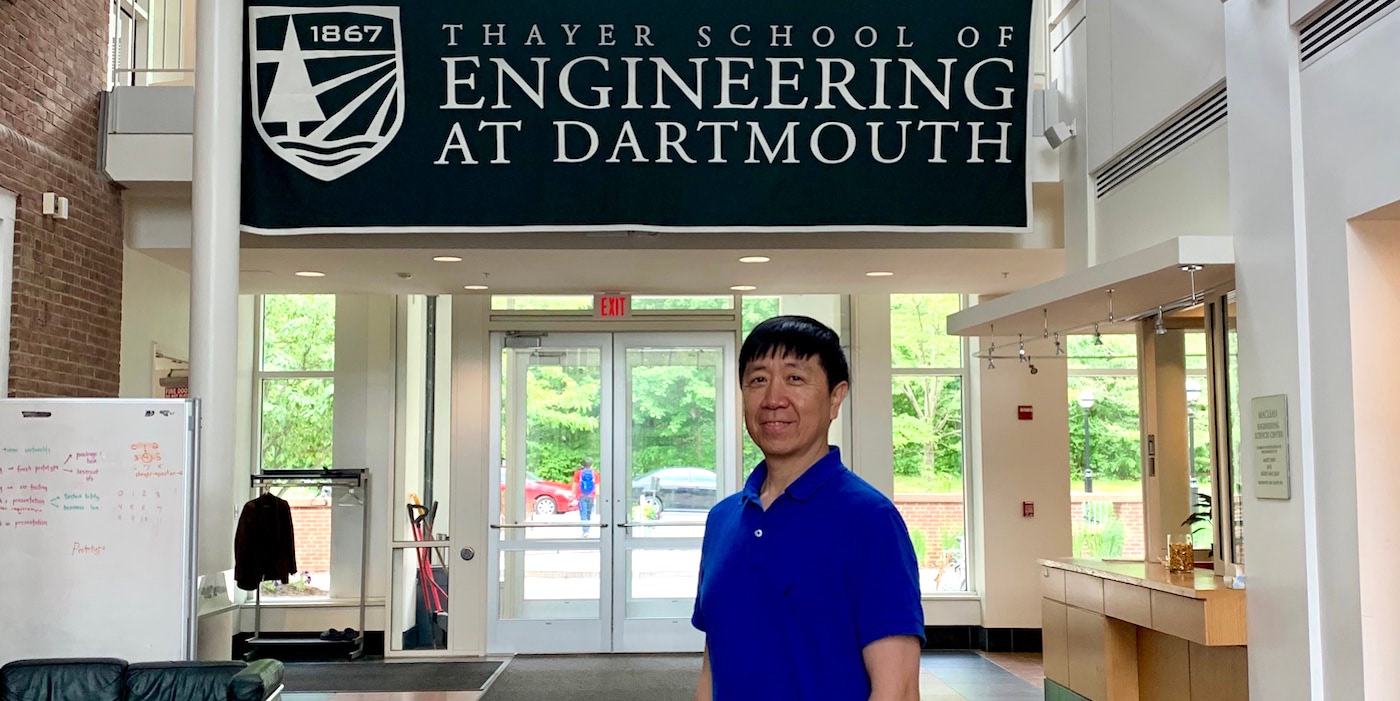- Undergraduate
Bachelor's Degrees
Bachelor of ArtsBachelor of EngineeringPartner School Dual-DegreeUndergraduate AdmissionsUndergraduate Experience
- Graduate
Doctoral Degrees
Doctor of PhilosophyPhD Innovation ProgramDoctor of Medicine-PhDGraduate AdmissionsGraduate Experience
- Research
- Entrepreneurship
- Community
- About
-
All Thayer News

Jian lives in Beijing with his wife Chessy. Their two children, Maya and Evan, both born in California, are now in college and high school in the US.
Alumni Portrait: Jian Lu Th'93
Jul 25, 2019 | by Catha Mayor Lamm
Electrical Engineer

Jian earned a PhD at Thayer in 1993 and is currently president of LinkedIn China.
Jian Lu Th’93 was a member of the team at Apple Inc. that developed QuickTime streaming—a project he now considers to be his greatest engineering challenge. He also served as VP of multimedia technology at Shanda Innovations, co-founded the content protection company Vobile, and was chief technology officer at Beijing-based Ku6 Media. He recently completed his first year as president of LinkedIn China.
We sat down with Jian to learn more about his story:
How was your first year at LinkedIn?
Well, I’ve learned a lot. I took the job because I felt I could leverage my strengths from having worked in China for eight years and experiencing how a local company works. And I also worked in Silicon Valley for about 16 years. Knowing both sides really helped. I knew the market in China was unique and that we had to apply a local playbook versus the global playbook that had proven not to work well over there. So I’ve implemented a new China strategy in the past year. The challenge was convincing the leadership in headquarters why the global playbook doesn’t work there. Transparency and the ability to communicate effectively with leadership has been critical. And as someone with a strong technology background, I think I can communicate with them a lot better, and know all the tradeoffs.
Are you more focused on how people use the technology as opposed to how it works?
It's more of a product strategy. For example, in China, the user isn't like someone in the US who separates professional from personal. People in China use WeChat—similar to Facebook but bigger—for everything. In other words, there it would be extremely hard for us to pitch the value of just networking, professional or nonprofessional, because it is pretty much taken over by WeChat. We have to offer a unique value proposition beyond networking.
Do you miss being in the trenches of technology development?
Sometimes. But mostly I felt I grew out of a very vertical area, and I could see things in a more complex way so that moving from R&D management to general management was a natural transition. In my journey, I realized that for a business to succeed, it wasn't just about the technology. Success also depends on broader things, from the branding and marketing to the management of the business.
Did your Thayer experience help with that transition?
Thayer was a good influence with both the curriculum and the interdisciplinary environment. My fellow classmates—some were materials science, some were environmental engineering. There were no borders and I think that really helped because there wasn't any time that I thought, "Okay, this is a subject or discipline that's too much or that I’m not supposed to do." I was able to transition from mechanical to electrical engineering and from control system design to signal processing, image processing, and video compression. And now I've moved into management and leadership because I think, at this stage of my career, I can contribute more by helping other people with my experience and connections, more than writing a program.
How did your switch from mechanical to electrical engineering happen?
In the early '80s in China, mechanical engineering was mostly about using machine tools and I was designing gears which didn’t interest me. Then I took an elective on data structure for computer science and I was attracted to that kind of programming and fascinated by the logic.
But when I applied to the graduate program at Dartmouth, it was too much of a shift to go from mechanical engineering to computer science because there were a lot of basic required CS courses. So I made the easier switch from mechanical to electrical engineering at Thayer.
I was first drawn into signal processing by a research project based at DHMC trying to predict the onset of epilepsy seizures with an electroencephalogram (EEG). But later I switched to image processing which Thayer was very strong at because of this collaboration with DHMC and also Dartmouth medical school.
Interestingly, once I went into industry, working for Apple, it was mostly computer science. And, again, coming from Thayer's borderless structure was helpful.
Why did you choose Thayer?
I was reading Peterson's Guide describing graduate schools in the US so I knew there weren’t any departments. I thought that was very unique and would be helpful because I was in-between disciplines and interested in systems engineering which combines multiple areas of engineering.
Also, I received a fellowship for the first year which was designed to allow more freedom in the beginning.
After the fellowship ended, what did you do next?
At that time there was a new theory in signal processing called wavelets that people felt had certain advantages over Fourier transform. At Dartmouth, a mathematician named Dennis Healy, working with John Weaver at DHMC, found an application for wavelets in magnetic resonance imaging.

Jian lives in Beijing with his wife Chessy. Their two children, Maya and Evan, both born in California, are now in college and high school in the US.
Working with images eventually lead to solving problems for video?
Yes. After I completed my PhD, my wife took a job in California, so I went to UC Davis. And then in '95, with the Internet boom, there were so many jobs in industry so that was when I joined Apple’s QuickTime compression and signal processing group. I was the tech lead on the video compression. There was also a separate audio compression project.
Did you decide then that industry might be a better place for you?
For a while I still was more interested in writing papers and going to conferences. But in industry there isn’t much reward for that. There’s more encouragement to file patents. So that was a gradual shift toward product development.
And then you started your own company, Vobile?
Yes. It went public in the Hong Kong market last year.
Everybody in Silicon Valley had peer pressure to start a company. When I joined Apple in ’96, it was actually the worst time. The company almost went bankrupt. During my first week, Apple announced four thousand layoffs. Fortunately, my group was intact. But every day you got business cards from headhunters in your windshield, because they were trying to recruit from Apple. In Silicon Valley there was a strong entrepreneurial spirit. If you stayed with a big company for a long time, people would say, "Oh, you probably aren’t that good if you can only stay with a large company." So there was a lot of peer pressure.
I actually joined a startup in 2000 and worked there for a year and a half. Just before 9/11 we were looking for series B funding and the money was almost in the bank. Then, on September 11th, Intel Capital was supposed to fly to our company. But all the flights were canceled, and they never came. The company quickly ran out of cash and closed.
Apple hired me back for another four years before I left again in 2006 to start Vobile.
Vobile uses video fingerprinting. Can you explain?
It's very much like the human fingerprint—a unique identifier. We found not only for video, but also for audio and text, we could apply the same concept of a fingerprint. We used an algorithm to extract a small intrinsic signature that’s unique to each piece of content and more robust than a watermark.
What's the main application for that technology?
After YouTube became popular, Hollywood had a lot of piracy problems and videos could not be protected adequately by the watermarking technology the industry was using. So the MPAA issued an RFI for fingerprinting technology and we were ranked first. That was very helpful because after that we got funding from Disney.
How long were you with Vobile?
I was there for five years until a headhunter representing a Chinese Internet company contacted me from Hong Kong. So I went there and built Shanda Innovations. I grew it really from scratch to almost 200 people in Beijing. After that, I worked for two more Chinese companies before I joined LinkedIn.
There was so much change happening so fast and I learned that most of the companies in China are market-driven, meaning they try to seize an opportunity in the market and move fast to create a new business. But they also shut it down fast when they see it’s not working, even after just six months. This is about survival. If they don't adapt fast to change, they could die very quickly. But many American companies, including LinkedIn, are more mission-driven, meaning they are committed to doing a certain thing. So the mentality is quite different.
What advice would you give aspiring entrepreneurs at Thayer?
I think in everyone's life or career, there’s that moment when you ask yourself, "Is this the best opportunity?" And you need to let it cool for a couple of weeks or months. Then, if you’re still thinking that if you don't do it you’ll regret it for life, then it's worth doing. I think that's a valid process to go through because of the sacrifice and effort involved in a startup.
Beyond that, I think the value that Thayer taught me was open-mindedness. There are no boundaries to what you could pursue.
For contacts and other media information visit our Media Resources page.
